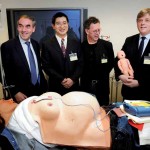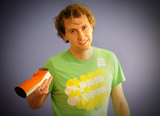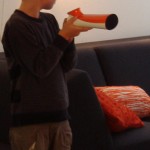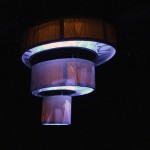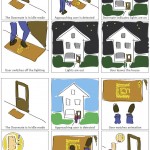
Don Willems designed a doormat. The doormat is not just for wiping your feet, but also for lowering the electricity consumption. How does it do it? The doormat is at the same time a LED display that allows people to easily turn off devices when leaving the house as well as improving their energy consumption behavior by leaning from tailored coaching when coming in. Read the full report for more information [PDF, 3M]
From his report, “The Doormate is for wiping your feet and supporting lowering of electricity consumption. It does the latter by communicating information through an integrated LED display. It allows people to easily turn of devices when leaving the house as well as improving their energy consumption behavior by learning from tailored coaching when coming in. One could say the Doormate is addressing both the ‘consumer’ – making sure no money is wasted when not at home and the ‘citizen’ – contributing by environmental friendly behaviour – in people. Continue reading Doormat is not just a doormat
